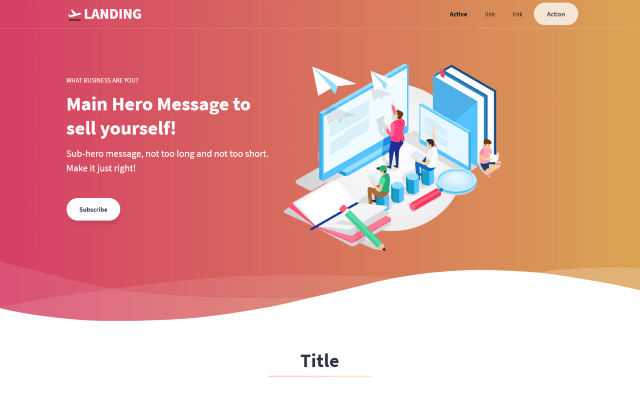sveltekit-landing-page
 sveltekit-landing-page copied to clipboard
sveltekit-landing-page copied to clipboard
Tailwind Landing page template converted to SvelteKit components
Tailwind Landing page template converted to SvelteKit components
Based on the Landing Page template for Tailwind CSS created by Tailwind Toolbox and converted to a SvelteKit application.

The site is running at https://sveltekit-landing-page.vercel.app, and it is automatically deployed to vercel on every push using the SvelteKit vercel adapter. Check the documentation for other adapters.
You also have an static version available at https://sveltekit-landing-page.vercel.app/html to compare results.
Deploying to vercel
Add "@sveltejs/adapter-vercel": "next" to the devDependencies in your package.json and run npm install.
pnpm install -D @sveltejs/adapter-vercel
Then modify your svelte.config.js:
const vercel = require('@sveltejs/adapter-vercel');
...
module.exports = {
kit: {
...
adapter: vercel()
}
};
Running locally
Clone the repo, install dependencies and start the development server:
git clone [email protected]:opensas/sveltekit-landing-page.git
cd sveltekit-landing-page
pnpm install
pnpm dev
The project SvelteKit project was created with
pnpm init svelte@next
And then tailwind support was added running:
pnpx svelte-add tailwindcss --jit
And then run the project with:
pnpm dev
Check the svelte-add/tailwindcss github repo for more info.
create-svelte
Everything you need to build a Svelte project, powered by create-svelte;
Creating a project
If you're seeing this, you've probably already done this step. Congrats!
# create a new project in the current directory
npm init svelte@next
# create a new project in my-app
npm init svelte@next my-app
Note: the
@nextis temporary
Developing
Once you've created a project and installed dependencies with npm install (or pnpm install or yarn), start a development server:
npm run dev
# or start the server and open the app in a new browser tab
npm run dev -- --open
Building
Before creating a production version of your app, install an adapter for your target environment. Then:
npm run build
You can preview the built app with
npm start, regardless of whether you installed an adapter. This should not be used to serve your app in production.